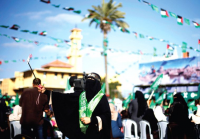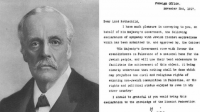
Links
Sheba Medical Centre
Melanie Phillips
Shariah Finance Watch
Australian Islamist Monitor - MultiFaith
West Australian Friends of Israel
Why Israel is at war
Lozowick Blog
NeoZionoid The NeoZionoiZeoN blog
Blank pages of the age
Silent Runnings
Jewish Issues watchdog
Discover more about Israel advocacy
Zionists the creation of Israel
Dissecting the Left
Paula says
Perspectives on Israel - Zionists
Zionism & Israel Information Center
Zionism educational seminars
Christian dhimmitude
Forum on Mideast
Israel Blog - documents terror war against Israelis
Zionism on the web
RECOMMENDED: newsback News discussion community
RSS Feed software from CarP
International law, Arab-Israeli conflict
Think-Israel
The Big Lies
Shmloozing with terrorists
IDF ON YOUTUBE
Israel's contributions to the world
MEMRI
Mark Durie Blog
The latest good news from Israel...new inventions, cures, advances.
support defenders of Israel
The Gaza War 2014
The 2014 Gaza Conflict Factual and Legal Aspects
To get maximum benefit from the ICJS website Register now. Select the topics which interest you.
Culture of Violence: A Palestinian Hobby
In the last year, the Western press has focused a great deal of attention on what has been described as a wave of violence committed by Jewish settlers living in the West Bank against Palestinians. The vandalism and other crimes committed by Jews—known as “price tag” attacks—have been widely condemned by the Israeli government and virtually everyone in Israeli society outside of the extreme right. But this marginal phenomenon—and even Israel’s sternest critics must conceded that this is something that is the work of a tiny minority even of settlers, let alone Israel—that has received disproportionate news coverage is rarely contrasted with a far more widespread phenomenon: Arab violence against settlers and Israelis.
As we learn in a front-page story published today in the New York Times under the headline of “My Hobby is Throwing Stones,” violence directed at Jews isn’t just a troubling trend, it is something that has become more or less the national Palestinian sport. Children, adolescents, and even adults treat flinging lethal rocks at any passing car with Israeli license plates as not merely boys being boys but acceptable behavior that is somehow justified by the ongoing dispute between the two peoples over the land and a host of other issues. The conflict between Jews and Arabs over the land is complex and there are victims on both sides. But what this story tells us about contemporary Palestinian culture and its glorification of violence, as well as the rejection of alternate means of dealing with the Jewish presence in their midst, speaks volumes about how difficult it will be to ever achieve peace.
There are a couple of key points to understand about this wildly popular Palestinian “hobby.”
The first is that though the story only mentions the victims of the stone throwing in passing in one sentence, flinging a large rock at an individual or a moving vehicle is not a game. It is a form of terrorism. Such actions are felonious assaults by any definition of the law. The purpose of the stone throwing is not making a political statement but to inflict injury and even death on those so unfortunate as to be in range of these missiles. Anyone who wants to understand what is driving the “price tag” attacks by a small number of settlers need only read this piece and understand that what they are reacting to is routine illegal violence that is condoned by the entire Arab community.
Defenders of the Palestinians may say that stone throwing is a reaction to the “occupation” and that those who throw rocks have no other way of protesting the settlements or what they consider wrongful behavior on the part of the Israel Defense Forces. But this ignores the fact that most of the tense encounters between the IDF and Palestinians stems from the violence that the latter habitually commit.
That leads to the second point: nowhere in this story does anyone ever stop and say that perhaps it would be better for the Palestinians’ quality of life and even their political aspirations if they decided to treat the Jews who live near them as human beings rather than merely enemy targets.
It is worth noting that Beit Omar, the town featured in the Times story, is located nearby the Gush Etzion bloc of settlements in the West Bank. Jodi Rudoren, the paper’s Jerusalem bureau chief, notes that Beit Omar’s location is ideal for stone throwing since it abuts a major highway near a group of Jewish communities. But she leaves out the fact that there is an interesting history of Jewish-Arab interaction in the era that is instructive in understanding the conflict.
The Gush Etzion bloc is, after all, not built on stolen Arab land, as the cliché goes about all such West Bank settlements, but on the ruins of Jewish communities that existed prior to 1948. In the months prior to Israel’s birth as the ruling British stood back and allowed a civil war to rage on their watch, local Arabs, aided by foreign volunteers, laid siege to the Jewish villages in the Gush Etzion area. Efforts to reinforce them from Jerusalem (which was itself under siege) failed and eventually they fell to Arab attack. Many of the inhabitants were subject to indiscriminate massacre while others were captured. Their homes were destroyed as local Palestinian Arabs celebrated.
Nineteen years later, after Israel took possession of the West Bank ending an illegal Jordanian occupation, the process of rebuilding Gush Etzion began and today the various towns in the area flourish and are rightly seen as Jerusalem suburbs that are not centers of settler violence or intolerance. No one envisions its evacuation even in the unlikely scenario of a peace deal being signed.
If Palestinians still dream of repeating the events of 1948, at least as far as Gush Etzion is concerned, that is more than a public safety problem. It represents a basic unwillingness to live in peace alongside their Jewish neighbors. If Palestinians can think of nothing better to do than to steal from or attack Jews in the town over the hill, how can we believe they are ready to accept peace with Israel under virtually any circumstances?
The Palestinians’ culture of violence goes much deeper than stone throwing. It is in fact merely a symptom of the hatred of Jews and Israelis that is fomented in their official media and throughout the Arab and Muslim world. Whatever your opinion about settlements or where the borders of Israel should be located, the longer Palestinians condone routine violence and train new generations of children to take part in this mayhem, the longer they are putting off the day when peace will arrive.
# reads: 173
Original piece is http://www.commentarymagazine.com/2013/08/05/culture-of-violence-a-palestinian-hobby-stone-throwing/





















